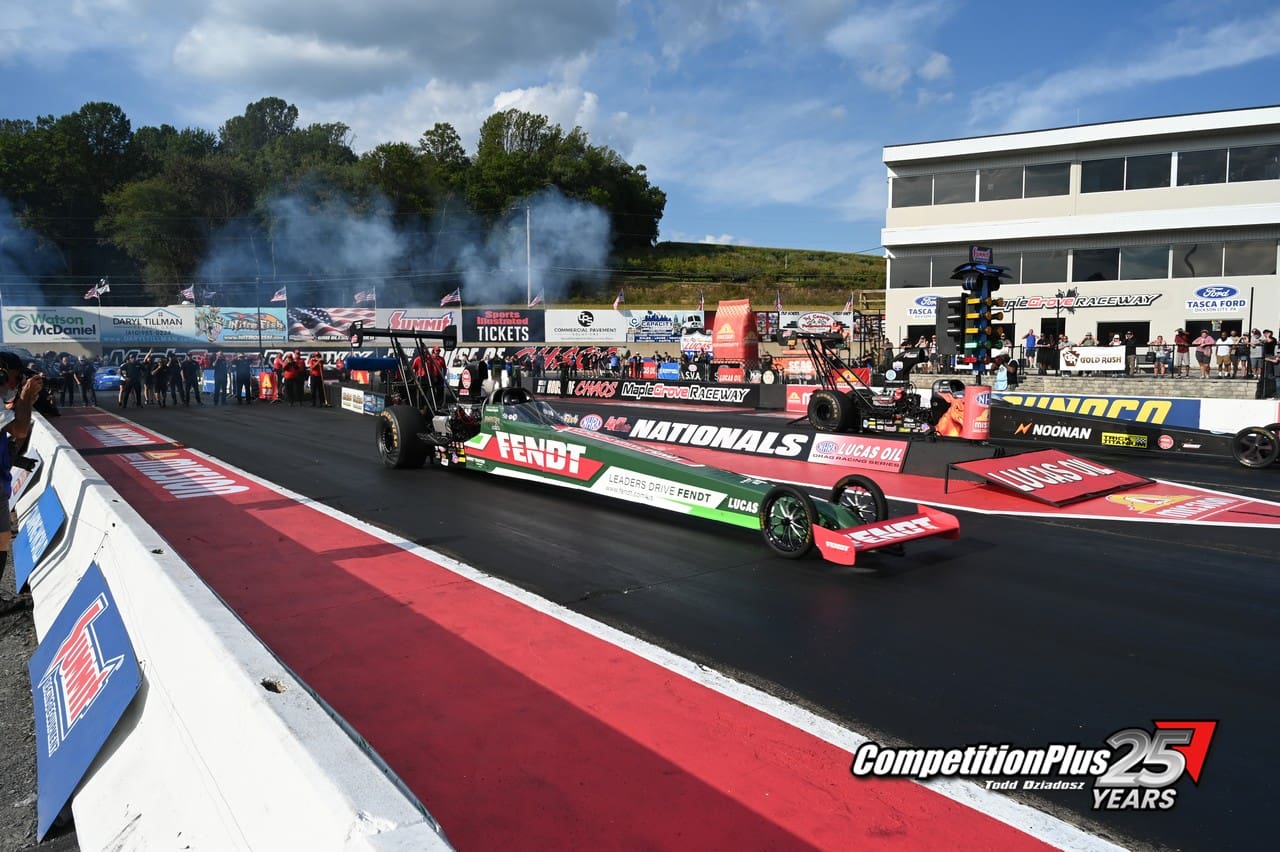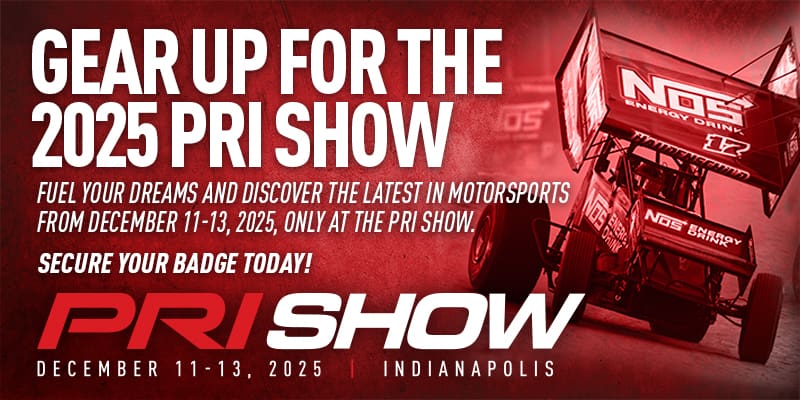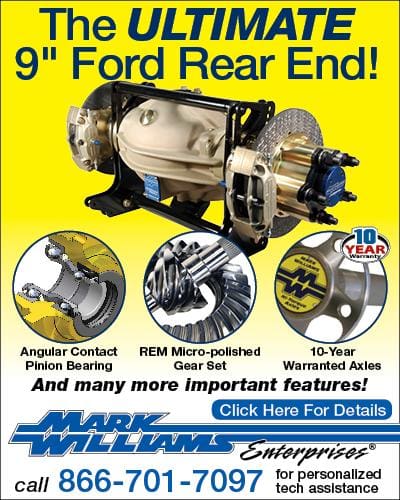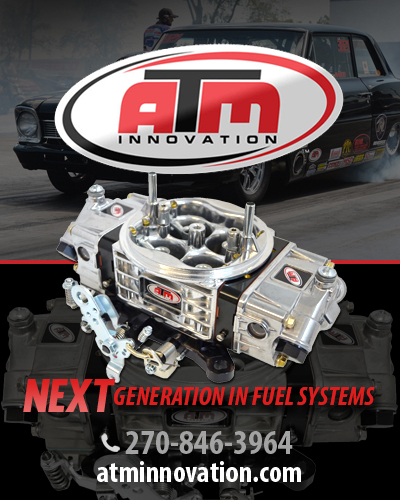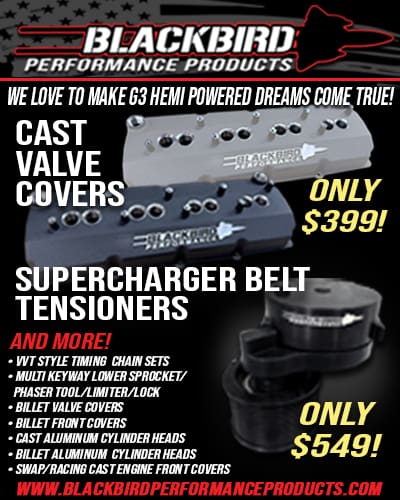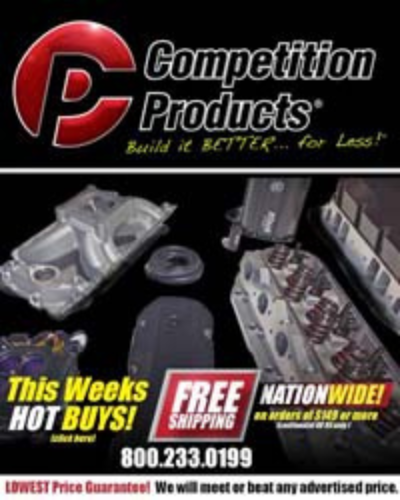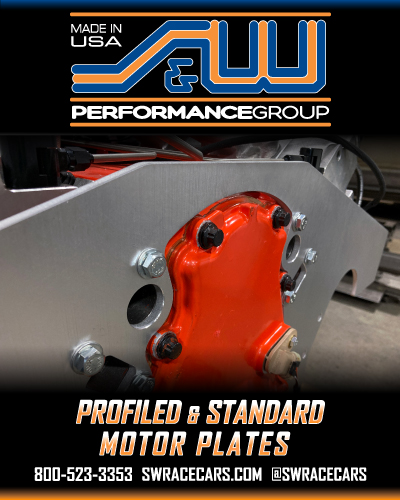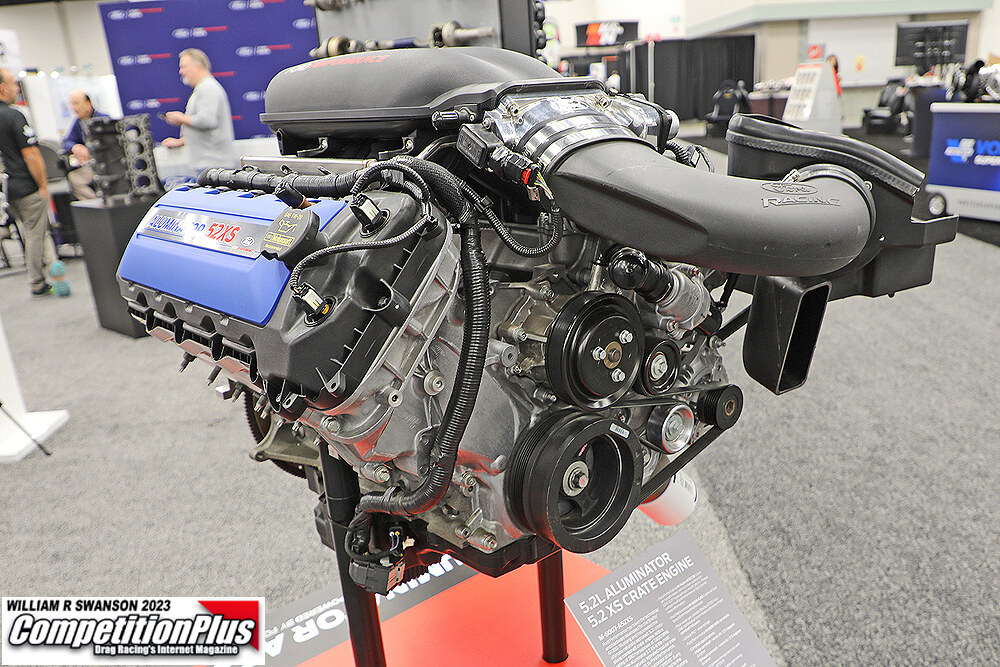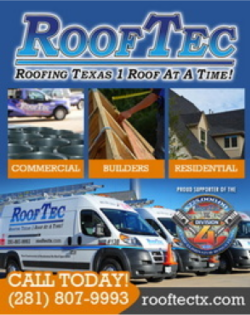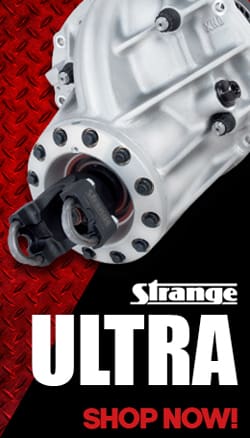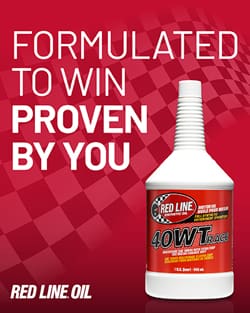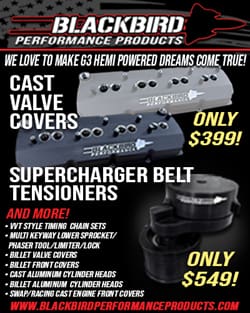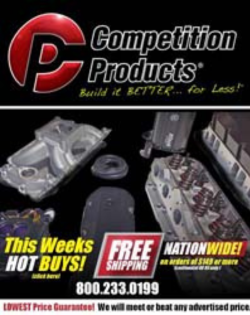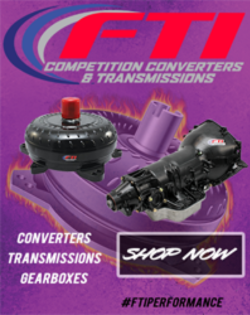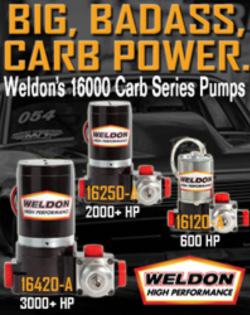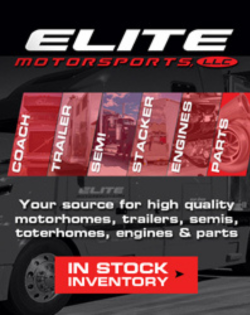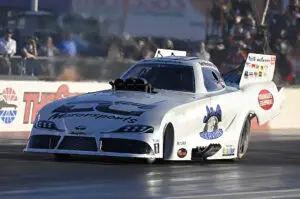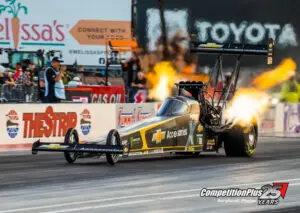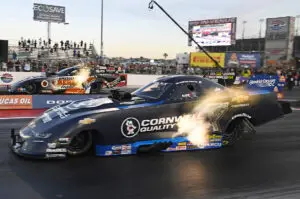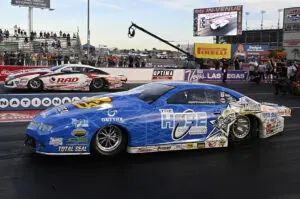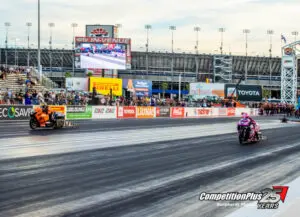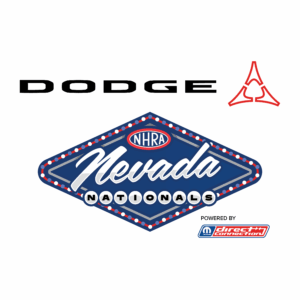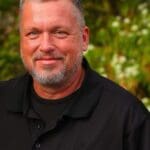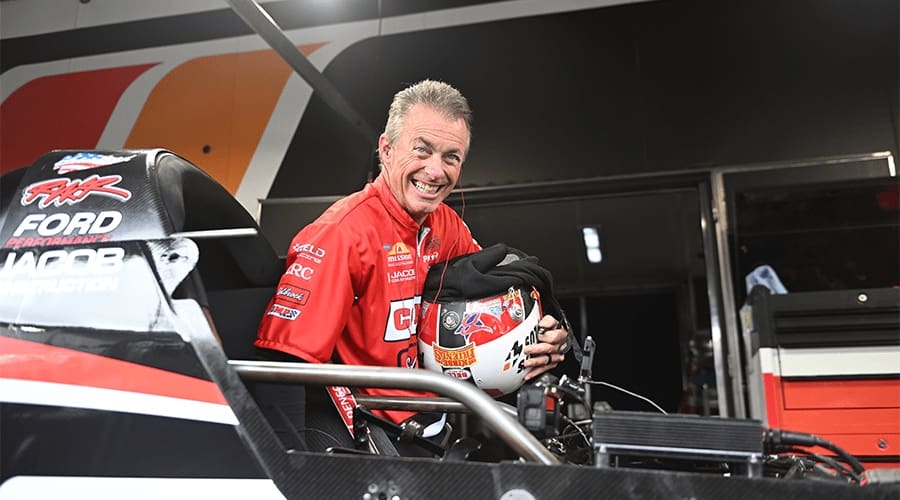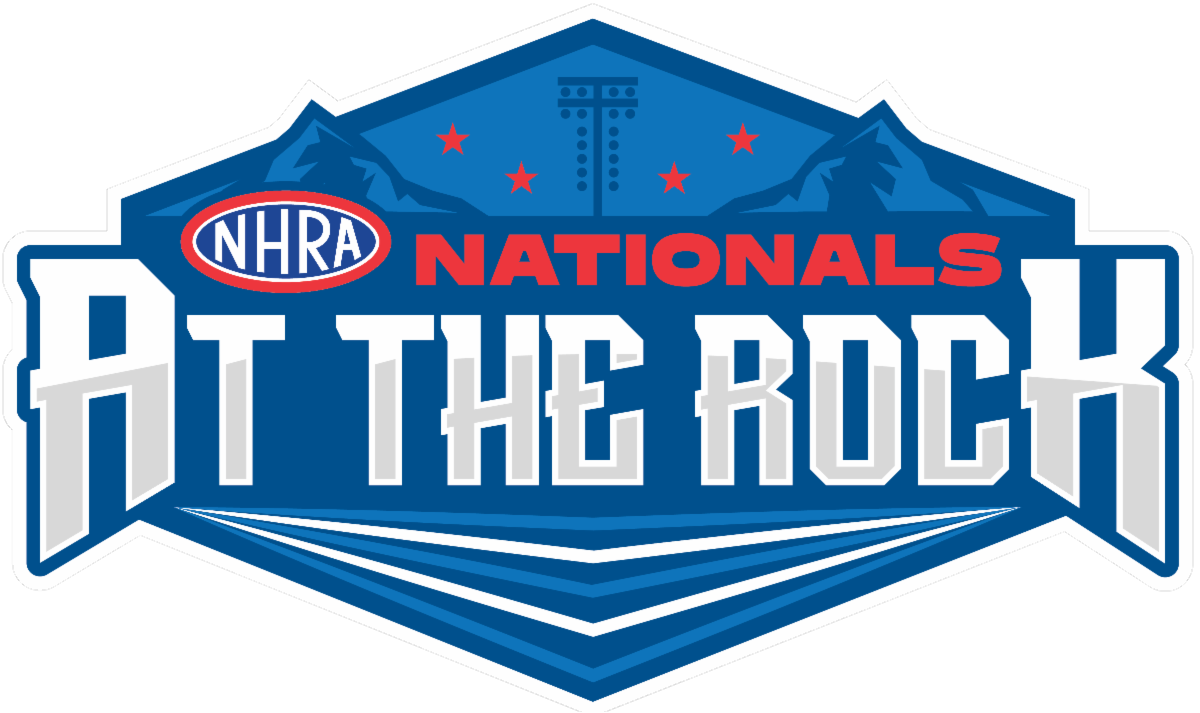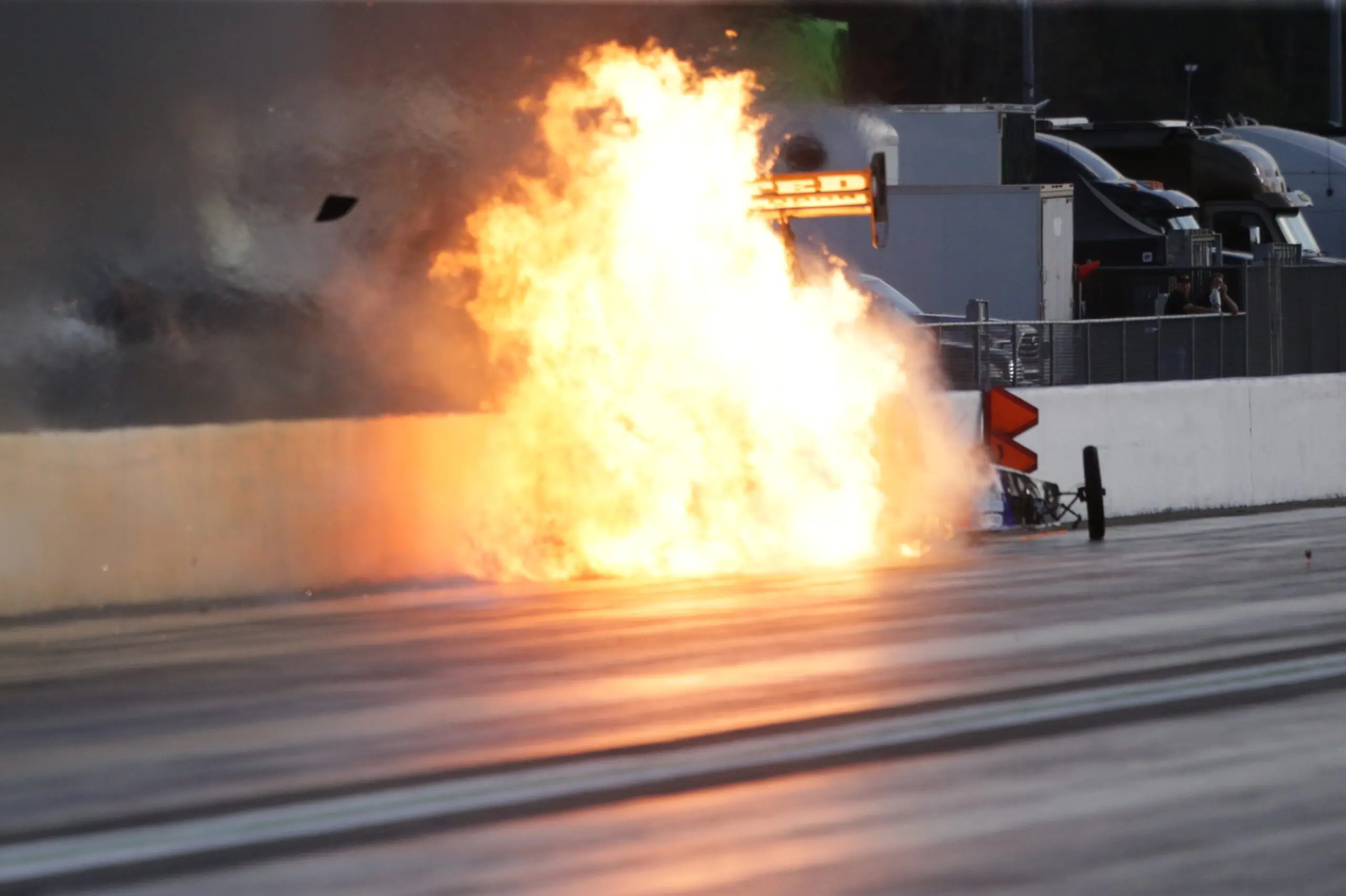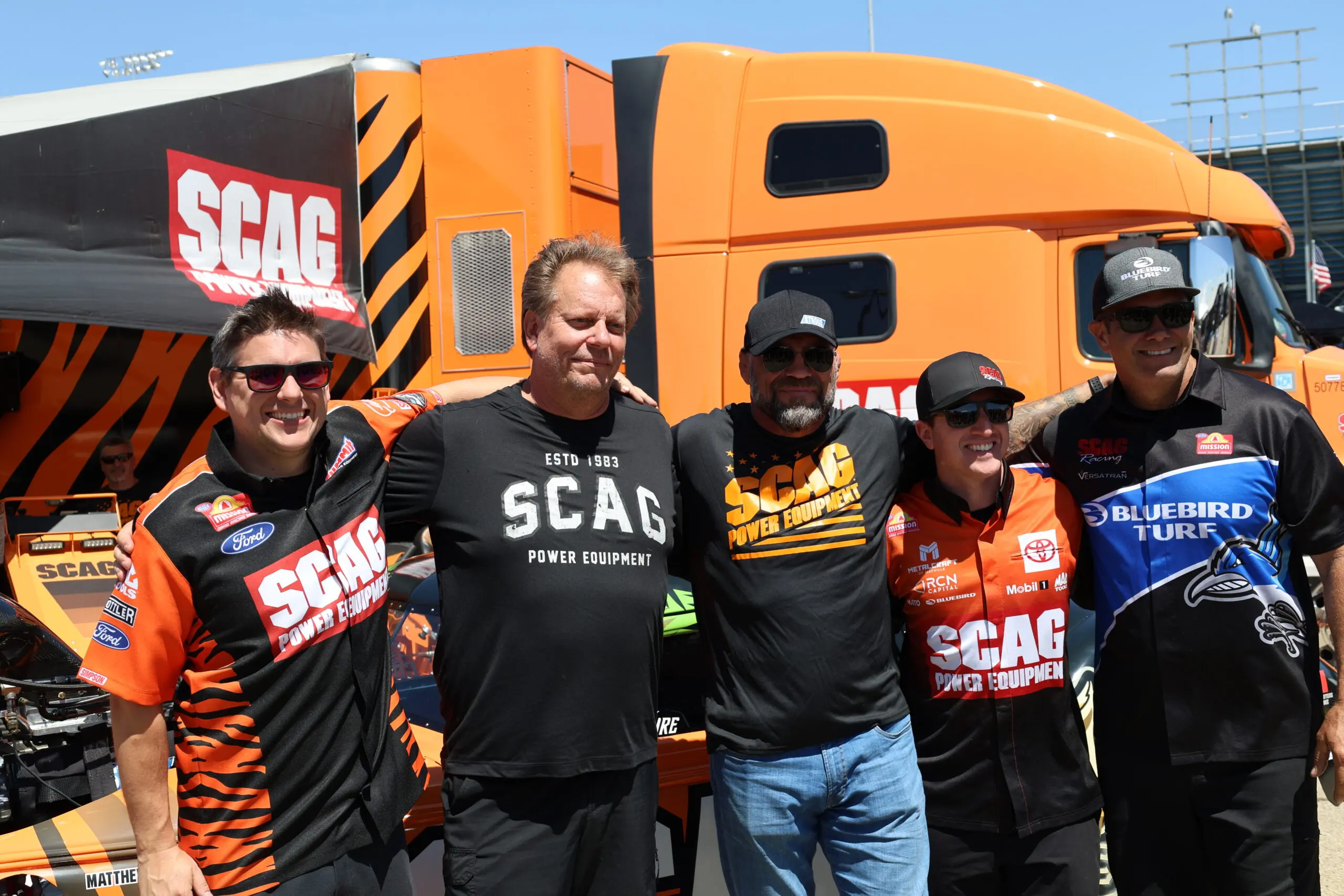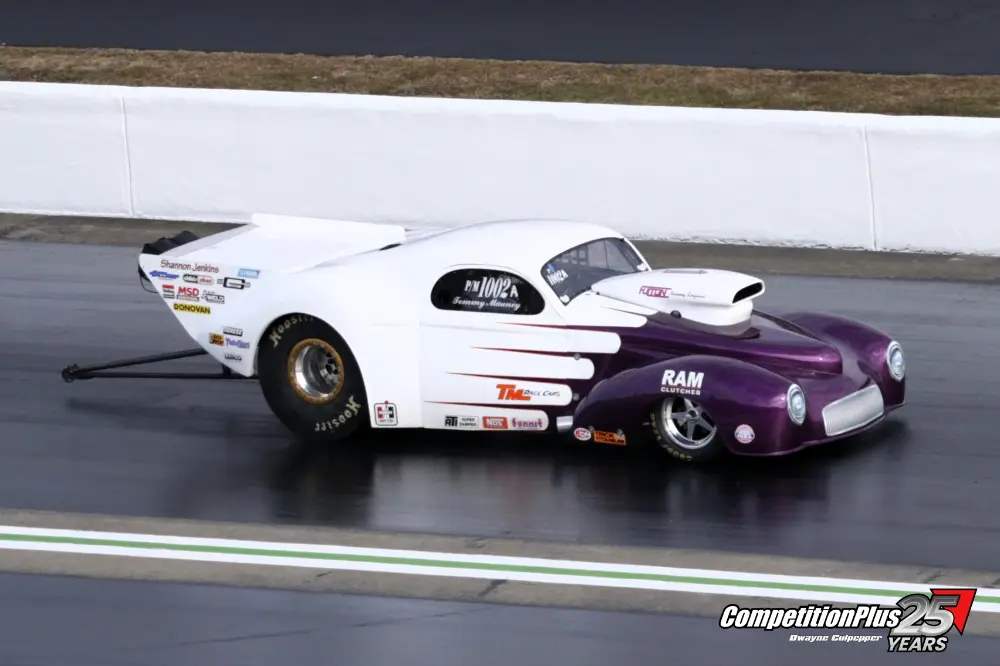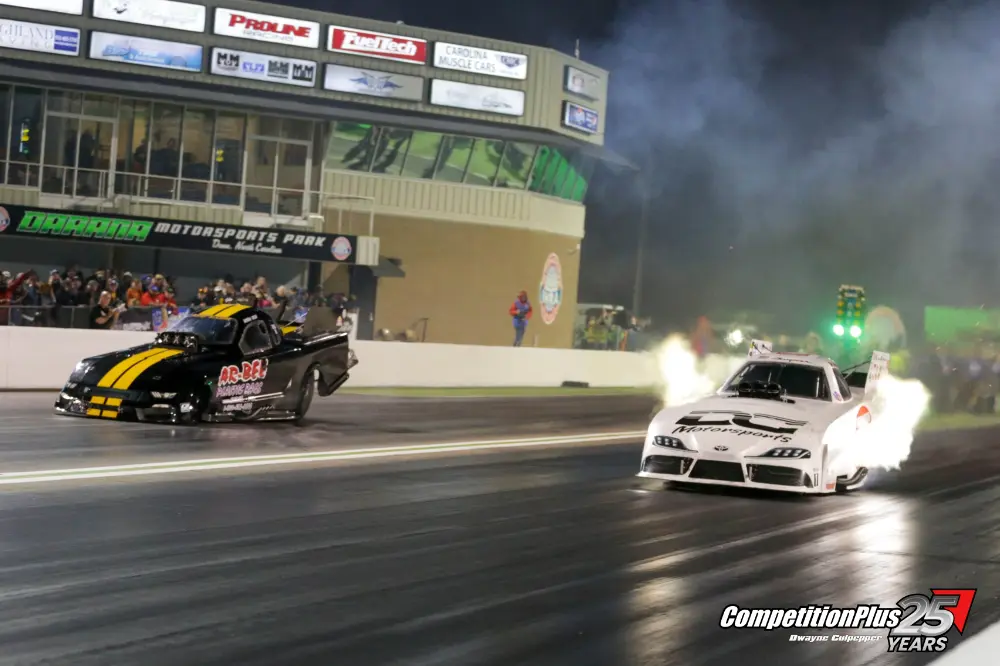Jamie and Renee Noonan uprooted their family and business from Australia with little more than determination, technical knowledge, and a dream. Eight years later, they have firmly planted their company in Spartanburg County, a region already steeped in motorsports success with 38 world championships won by 14 different drivers.
The Noonans’ journey has been defined by long workdays, cultural adjustments, and financial hurdles, but also by technical breakthroughs that have reshaped drag racing. At the center of their story is the Noonan 4.9 engine, a radical innovation that changed expectations in Pro Modified competition.
“We really needed to showcase Jamie’s exceptional, innovative ability,” Renee said. “The 4.9 was an innovation of his. It was completely designed from scratch, and nothing from the old engines would fit it. People were nervous about that, but the performance spoke for itself.”
From Australia to America
The Noonans built their reputation in Australia manufacturing cylinder heads and engine components for drag racing and Supercars. But when they introduced engine blocks, they found reluctance among U.S. customers unwilling to pay shipping costs or wait for repairs across the Pacific.
Their first U.S. base was a small shop in Utah, where Jamie spent a year producing blocks with used equipment. Renee stayed in Australia, running the business and raising their children. They shipped parts back and forth, but time zones and financial restrictions made growth impossible.
“We didn’t know that none of our business records from Australia wouldn’t be recognized here,” Renee said. “We couldn’t get financing. We were unable to purchase a facility.”
A turning point came in 2016 when the Noonans negotiated the purchase of an entire race team’s assets, including three semi rigs, four race cars, and a Spartanburg building. “We didn’t just buy the building,” Jamie said. “We bought the whole race team. And yes, the golf cart came with it, which was all Renee wanted.”
Within months, they closed their Australian operation, packed CNC machines, dynos, and service equipment into containers, and shipped everything to South Carolina.
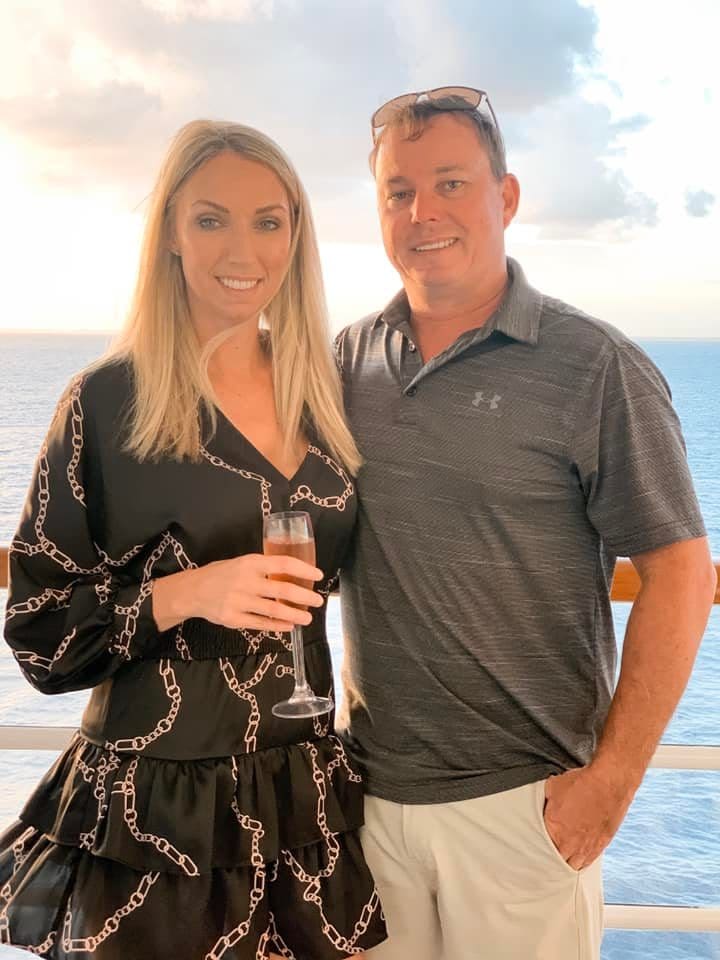
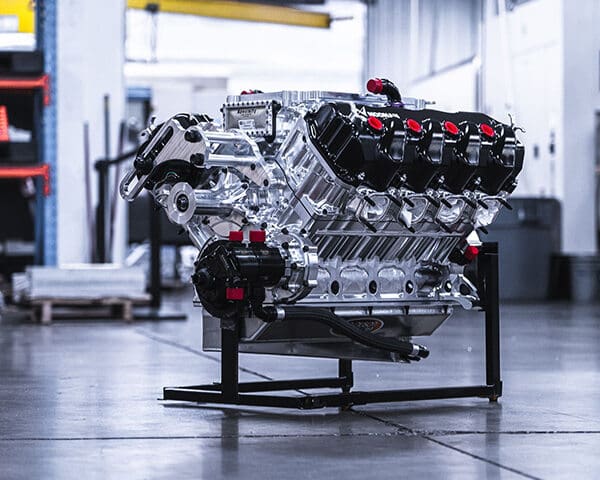
The 4.9 Engine
Once in Spartanburg, the Noonans pushed forward with Jamie’s boldest project. The 4.9 engine was designed as a departure from the traditional 426 Hemi architecture that had dominated drag racing for decades.
“To take the cylinder head to the next level, we really needed to start again with a whole new platform,” Jamie said. “We moved lifter positions, raised camshafts, changed the head bolt pattern. It was a complete engine we designed from scratch.”
Skeptics doubted racers would adopt an engine that required abandoning their existing parts inventory. The Noonans silenced critics by testing the engine themselves in one of their own Pro Modified cars with Australian driver John Zappia.
“On our third event, with about 14 laps on the engine, it went out and set the world record,” Jamie said. “At that point, we didn’t need to say anything.”
The numbers told the story: 5.42 seconds at 268 mph. From there, acceptance followed. Canadian tuner Al Billes and driver Tommy D’Aprile won a Pro Boost world championship with a single 4.9 engine that lasted the entire season.
Expanding Influence
The 4.9 quickly spread to Outlaw Pro Mod, Pro Boost, Top Dragster, and even boat racing. “One boat had two 4.9s in it with screw blowers,” Jamie said. “They were trying to set a world record. That shows the versatility of the engine.”
NHRA has not approved the 4.9 for Top Alcohol Dragster or Funny Car, a decision the Noonans believe is rooted in resistance to change. “The 4.9 could solve reliability issues,” Jamie said. “You could change a piston in 10 minutes without lifting the supercharger. But NHRA doesn’t see it that way. They think it makes old engines obsolete.”
Despite regulatory limits, the Noonans have built a reputation for constant innovation. “Our brand has set a standard in the industry,” Renee said. “People are always waiting for us to come out with the next best thing. We’re always years ahead, even if we hold parts back until the market is ready.”
They have since unveiled a quad-cam V10 supercar engine at the Performance Racing Industry trade show, drawing interest from restoration and specialty car builders. “It’s a little outside drag racing, but we have a future purpose for that engine,” Jamie said.
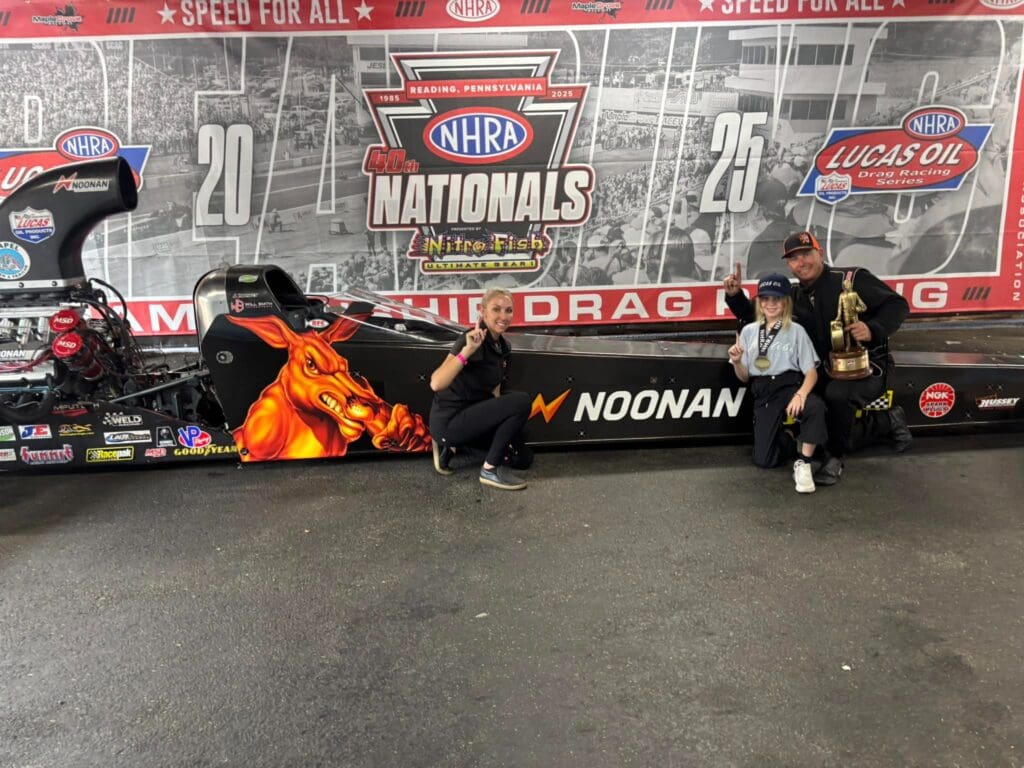
Spartanburg Roots
The Noonans’ Spartanburg headquarters now spans 39,000 square feet across two buildings with plans for further expansion. A new 20,000-square-foot facility is scheduled for construction next year to house Trick Titanium operations.
“Our shop in Australia was about 12,000 square feet,” Jamie said. “Now we have nearly 40,000 here, plus six acres. That’s the American dream right there.”
The couple’s rise has not been without cultural challenges. Renee recalled sending out dozens of checks to vendors early on—without signing them. “They all bounced,” she said, laughing. “In Australia we haven’t used checks for 30 years. Those are the learning curves we faced.”
Fax machines, financial hurdles, and the absence of nearby family added to the strain. “The hardest part was not having our support network,” Renee said. “We worked seven days a week for four years. Our girls rode their bikes around the machines with us. People make it look easy, but it was challenging.”
Global Reach, Local Commitment
Today, Noonan Race Engineering produces engines and components for racers around the world. They also manufacture private-label components for European companies, supplying hundreds of parts branded under other names but built in Spartanburg.
Jamie draws on his years in Australian Supercars and decades in drag racing to keep the company advancing. “I’ve been involved in drag racing since I was 10 years old,” he said. “Everything we design is about performance and usability. We think about the crew guy who has 30 minutes between rounds. That’s always in my mind.”
The Noonans’ story resonates in Spartanburg, a county with deep motorsports history. Spartanburg is a county richly deep in talent with 38 world championships earned by 13 different drivers in four drag racing sanctions. NASCAR even considered building Talladega Speedway in Spartanburg until it was voted down by town officials.
For Jamie and Renee, the connection is fitting. Their business reflects both innovation and persistence, the same qualities that helped Spartanburg racers build their legacy.
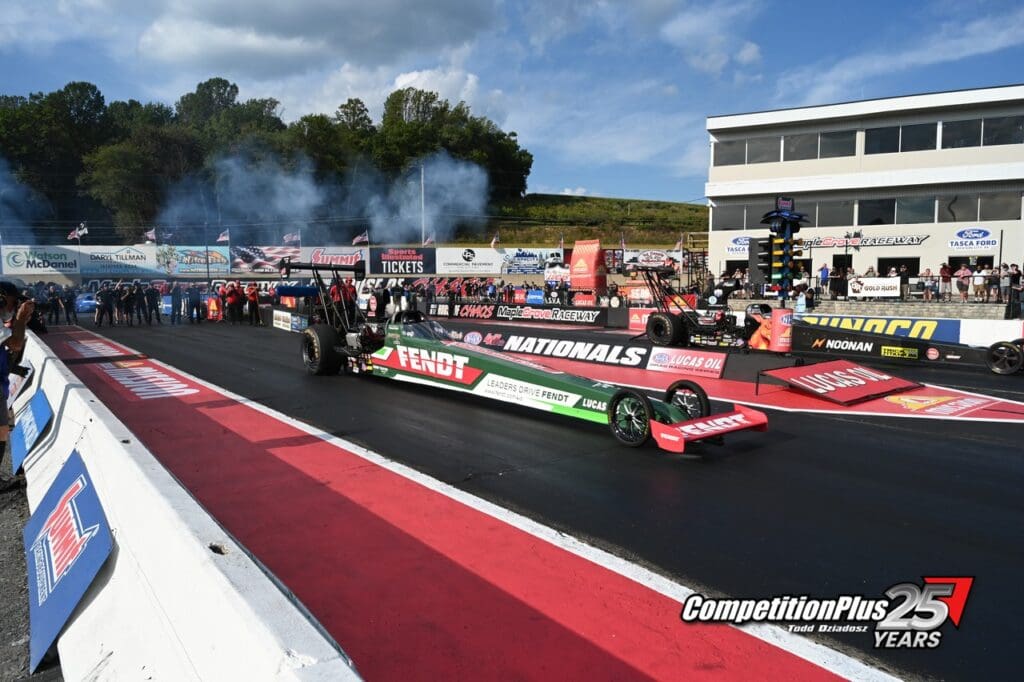
Looking Ahead
The Noonans are candid about their future. They continue to lobby sanctioning bodies for approval of the 4.9 in new categories, while preparing other projects quietly in the background.
“We’ve had parts designed for years and held them back until the time was right,” Jamie said. “We’re always ready for the next step.”
At the same time, they remain committed to the family-oriented culture that sustained them through the difficult early years. “It’s been tough, but the last 18 months we finally feel settled,” Renee said. “We’re here as a family and as a business. That’s the most rewarding part.”
The Noonans came to America with boxes of equipment, a handful of customers, and an unshakable belief in Jamie’s ideas. They now preside over a company that not only supplies engines worldwide but also shapes the future of drag racing.
“We’ve accomplished a lot,” Jamie said. “But more than anything, we’ve built something lasting. That’s what makes it all worthwhile.”





